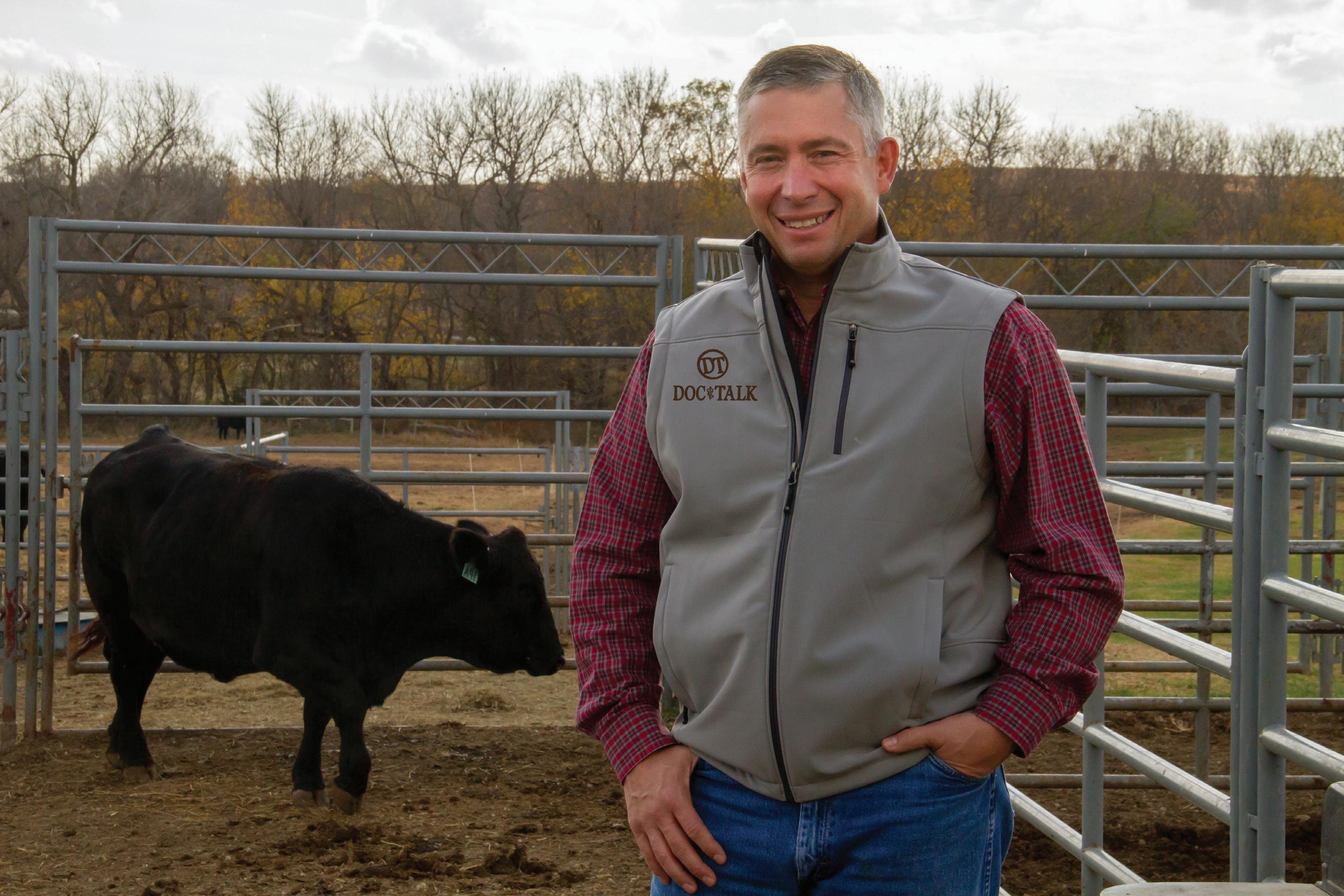
3 minute read
Nutrition Impacts Feedlot Health, Part 1: Prenatal Nutrition
By: Jeremy Martin, PhD, Great Plains Livestock Consulting Inc.
This time of year as feedlots fill up with bawling calves and cow/calf producers are busy preg-checking cows and making winter feed plans, the thoughts of one are probably not on the mind of the other.
However, recent research proves the effects of nutrition on health of feedlot cattle begins before the calf is born. Until recently, limited research efforts targeted fetal programming effects in ruminants.
The fetal programming hypothesis states that postnatal growth and physiology can be influenced by stimulus experienced in utero - in the case of cow/calf systems that the cow’s plane of nutrition can influence how her calves perform after birth. Research data are available illustrating fetal programming effects ranging from differences in growth and/or weight to divergent expression of specific genes due to maternal diet during gestation.
Our goal is to address the effects of nutrition on feedlot health throughout the production cycle, beginning this month with how nutrition of the cow during gestation influences calf health later in life.
In spring-calving cow/calf production systems that rely mainly on forage, nutritional requirements of cows during late gestation typically exceed nutrient value of the grazed forage. The potential for cows to be deficient in protein and energy exists; in fact without a planned supplementation strategy based on solid data and feed test results, it is very likely.
In the absence of a supplemental mineral program, deficiencies of trace minerals are also likely, based on liver biopsy data from across the range states. Any chink in the armor of a ranch’s cow nutrition program has the potential to influence the feedlot health of her calves.
Ample research exists that displays a connection between cow nutrition in late gestation and the performance of her subsequent calves through weaning time. In short, cows deficient in protein, energy, or trace minerals during late gestation wean lighter calves, EVEN IF the cow nutrition is corrected after calving.
Furthermore, there is clearly a link between cow nutrition during the last 3rd of gestation and the fertility of those heifer calves whose fetal development occurs in that timeframe. From a feedlot perspective, the important data to note is that steer progeny of those cows deficient in protein and/or energy during late gestation have lower carcass weights, re- duced marbling scores, and thus a lower percentage grading Choice or greater at harvest.
The real concern this time of year is calf health in feedlots, and evidence suggests that late gestation nutrition of the dam plays a significant role in the health of her next calf, even after weaning.
Data from 2009 (Larson et. al., Journal of Animal Science) demonstrated a difference in feedlot health of calves where about 10% fewer calves born to cows supplemented with protein during late gestation required treatment for respiratory or gastrointestinal symptoms compared to those born to un-supplemented cows.
This difference occurred despite the fact that there was no difference in preweaning health of the calves. In this case, cows either grazed winter range or corn stalks and were supplemented protein equivalent to 1 lb/cow/day of 28% protein cubes or were not supplemented during the last 90 days of gestation. For cows on either winter range or stalks, supplemental protein improved feedlot health of the calves they were gestating at the time of supplementation.
Another recent research report (Moriel et. al., 2016, Journal of Animal Science) illustrated a connection between energy restriction of pregnant cows in the last 40 days of pregnancy and the immune function of the calves in utero at that time.
In this study, cows were fed either 70 or 100% of their energy requirements in the last 40 days of gestation and their calves were studied for a 40 day backgrounding period after weaning. Calves born to restricted cows had suppressed titer response to BVDV-1a following vaccination with a commercially available vaccine. These same calves also had somewhat reduced postweaning stress response.
It is important to note that these changes in calf vaccination response occurred despite the fact that even the restricted cows remained in adequate condition at calving (BCS 6.3).
Aside from protein and energy, it is well known that minerals, including trace minerals, play a significant role in cattle health. Please refer to pages 45-46 in the fall 2016 issue of Protein Producers for details of a recent study comparing calf health based on whether or not the dams received trace mineral supplementation and the form of that supplementation. It certainly proves that protein and energy are not the only nutrients involved in fetal programming of calf post-weaning health.
In summary, observant cattlemen have long suspected there was a connection between cowherd nutrition and calf feedlot health. These limited data reveal that deficiencies of protein, energy, and trace minerals in the cowherd may lead to greater calf morbidity and mortality after weaning. As the body of research grows this connection will likely be better characterized.











